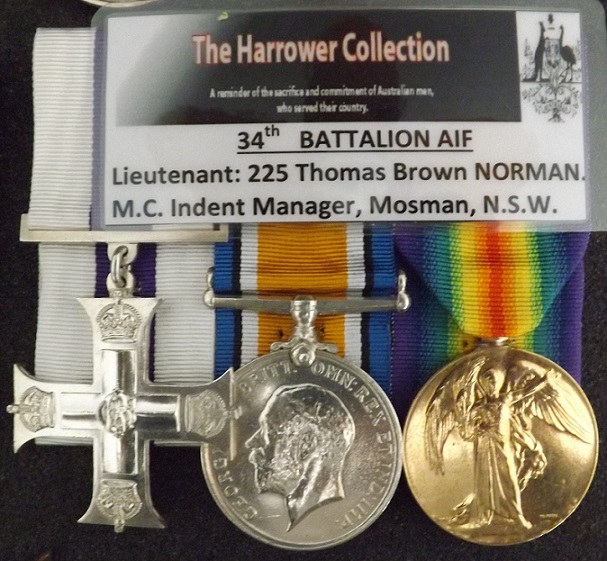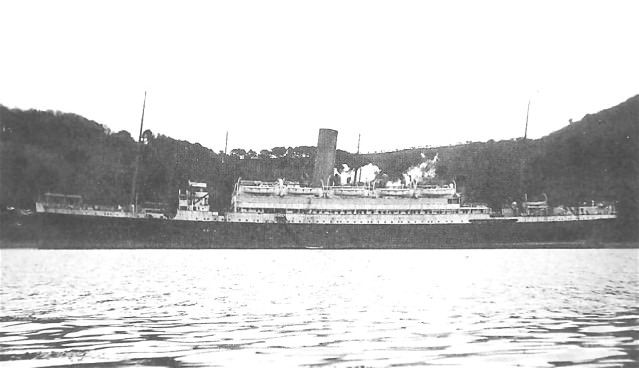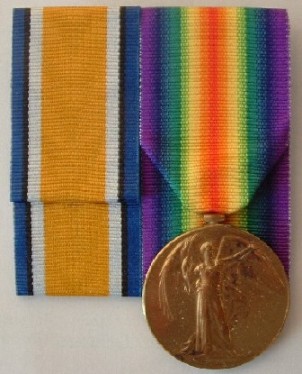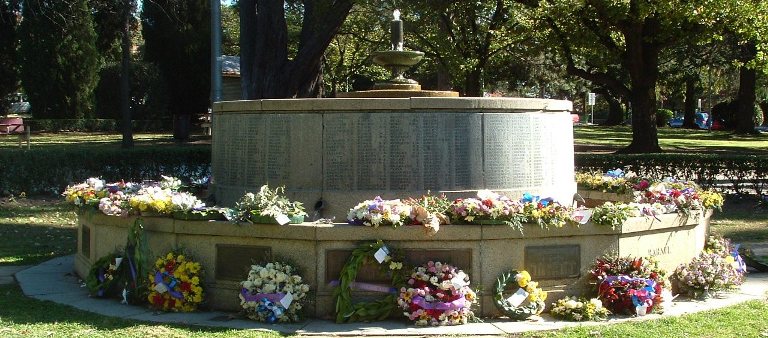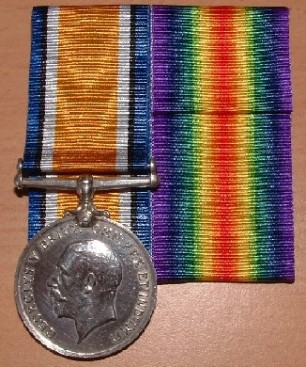
33rd BATTALION A.I.F.
Private: 466 Reuben Herbert KING.
Born: 25th November 1879. Uralla, New South Wales, Australia. Birth Cert:8954/1879.
Married: 1932. Bingara, New South Wales. Marriage Cert:164/1932.
Wife: Alice Eliza King. nee: Holliman. (1891-19..)
Died: 25th January 1954. Bingara, New South Wales, Australia. Death Cert:6626/1954.
Buried: Bingara Central Cemetery. Row J Plot 29
Father: John Alfred King. (1845-1926) Died at Bingara, New South Wales, Australia.
Mother: Catherine King. nee: Campbell. (1849-1933) Died at Bingara, New South Wales, Australia.
INFORMATIONReuben Herbert King enlisted with B Company 33rd Battalion AIF on the 28th of January 1916 and was an original member of the Battalion. He left Sydney on board HMAT A74 "Marathon" with his two brothers on the 4th of May 1916.
 He disembarked with the battalion at Plymouth, England on the 9th of July 1916. Reuben was admitted to hospital (sick) on the 1st of November 1916 and taken on strength to the 13th Training Battalion. He proceeded overseas to France on the 15th of February 1917 and on the 17th marched in the 3rd A.D.B.D Estaples. On the 18th of April he re joined his battalion.
He disembarked with the battalion at Plymouth, England on the 9th of July 1916. Reuben was admitted to hospital (sick) on the 1st of November 1916 and taken on strength to the 13th Training Battalion. He proceeded overseas to France on the 15th of February 1917 and on the 17th marched in the 3rd A.D.B.D Estaples. On the 18th of April he re joined his battalion.
Reuben was again admitted to the 9th Field Ambulance, suffering from (Debility) on the 8th of July 1917 and re joined the 33rd battalion on the 20th of July. On the 20th of August he was admitted to the 11th field ambulance suffering (Debility) and was transferred on the 23rd to the 58th General Hospital at St Omer (Sick), and transferred to the 13th Convalescent Hospital at Trouville on the 6th of September 1917.
He was discharged from Hospital on the 2nd of November 1917 to Base as Trouville, and marched to the 3rd A.D.B.D at Rouelles and embarked for England, classified P, Base and was marched into No:2 Com, Depot ex France. Reuben left England on board "Balmoral Castle" on the 1st of February 1918 and disembarked in Sydney on the 28th of March 1918. Reuben was discharged Medically Unfit on the 1st of May 1918 (Chronic Rheumatism).
His British War Medal:44401 and Victory Medal:43406 PTE 466 R H KING 33 BN AIF and Gold Tribute Fob were acquired from Bristol in England in August 2005 and are now in the Harrower Collection.

Gold Tribute Fob was presented by Residents of Bingara to a Bingara Soldier of the Great War "HIS COUNRTY CALLED HE ANSWERED"
 Gold Tribute Fob to a Bingara Soldier
Gold Tribute Fob to a Bingara Soldier

Reuben Herbert King's Grave. Bingara Central Cemetery. FAMILY INFORMATIONReuben was a single 36 year old Farmer from Bobby Whitlow, Bingara, New South Wales upon enlistment. Reuben enlisted with his 2 brothers. Private: 465 William KING 33rd Battalion AIF and Private: 467 George Thomas KING. 33rd Battalion AIF who was Killed in Action
FAMILY INFORMATIONReuben was a single 36 year old Farmer from Bobby Whitlow, Bingara, New South Wales upon enlistment. Reuben enlisted with his 2 brothers. Private: 465 William KING 33rd Battalion AIF and Private: 467 George Thomas KING. 33rd Battalion AIF who was Killed in Action

St Paul’s Rd. Hemel Hempstead, England. Christmas Day. Alice and Walter Holliman, sister Alice Eliza King nee Holliman.
Alice Eliza Holliman embarked from London on board the S.S. "Baradine" on the 22nd April 1926 as a single 34 year old from 17 Summerleaze, Hillfields Park, England. She married Reuben Herbert King in 1932 at Bingara, New South Wales. After Reubens death Alice returned to England.
John and Catherine King had 10 children, 7 boys and 3 girls. John Ernest King born 1875 at Tamworth N.S.W. Birth Cert:19975/1875 and died in 1915 at Bingara, N.S.W. Death Cert:11978/1905. James Alfred "Alf" King born 1876 at Tamworth, N.S.W. Birth Cert:7049/1876. George Thomas King born 1878 at Armidale, N.S.W. Birth Cert:7738/1878 and died in 1917 at Messines, Belgium. Reuben Herbert King born 1880 at Armidale, N.S.W. Birth Cert:8954/1880 and died 1954 at Bingara, N.S.W. Death Cert:6626/1954. Arthur Edgar King born 1882 at Bundarra, N.S.W. Birth Cert:25375/1882 and died in 1960 at Inverell, N.S.W. Death Cert:11809/1960.

Catherine King. nee: Campbell. (1849-1933)

1933. Obituary Notice for Catherine King. nee: Campbell.
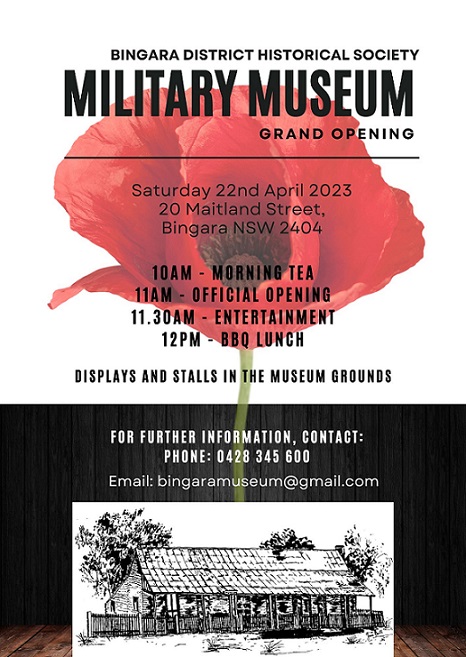
22nd April 2024.
I was invited as a guest speaker to the Grand Opening of the Bingara War Museum.
Bingara War Memorial Museum 22/04/2023
What can we and future generation do to ensure our veterans names and their deeds are remembered. It has been said they we die twice. The first time is when we take our last breath and the second time is when our name is spoken for the last time. Projects such as the Bingara War Museum will help to ensure that our veterans names and their deeds are not forgotten.
When the name Bingara is mentioned, I think of “B Company” 33rd Battalion AIF. The composition of the 33rd Infantry Battalion was on a district basis. "A Company" was from Armidale and Tamworth, "B Company" was from Walcha, Uralla, Barraba, Bingara and Manilla. "C Company" was from Narrabri, Moree and Inverell and "D Company was from Glen Innes, Guyra and Tenterfield.
The AIF Database records that out of the One Hundred and Fifty (150) men who gave 'Bingara' as their address: Eighty Four (84) of them joined the 9th Brigade Battalions, with seventy eight (78) of those going to the 33rd Battalion (New England's Own aka the Northern Battalion).
At least 44 men from the Bingara District served with B Company 33rd Battalion AIF were original members of the Battalion during the Great War. They were from places called, The Plain Horton River-Box Hill- Murtonvale Topwater- Barracks Creek-Myall Creek- Garambeel- Spring Hill- Pine Hill- Pine Ridge- Mountview- Bobby Whitlow- Murvey – Boughheel Station- Mount Rodd- Annandale -Horton River- Keera- Green Bend Copeton- Bindi Elcombe- Wilga Farm- Middle Crossing- Castlemaine Halls Creek.
Many of whom worked together, were fathers, sons, brothers and brothers’ in law, uncle's, cousins and best friends. And it was these men that had the sad duty to write reports giving the circumstances of the death of a Bingara Soldier.
15th October 1917
Informant; Private: 376 Edgar Auston BROOKS I knew a man called George Thomas KING. who was in B Company and I think No:8 Platoon. His number was a low one something like 467 and he was one of the original men. He was cook in B Company. Before joining up he was a shearer from Bingara, N.S.W. He was a man about 40 with a dark complexion and dark moustache and about 5 ft 10. He was killed by a shell falling on the cook-house on the 27th of July at Messines. I saw his body afterwards buried close to where he was killed and a cross was put up over his grave with his name, number and regiment.
No 2 Station Hospital, Boulogne.
Home Address: Keera Street, Bingara.
16th November 1917
Informant; Private: 432 Henry Herman HARTOG. He was killed near Messines. I saw George Thomas KING killed and buried close to Messines in the 9th Brigade Cemetery. I saw his grave and a cross up. I knew him well, came from Australia with me.
Harefield, England. Ward: 3
Home Address: Faithful Street, Bingara.
Private: 467 George Thomas KING is remembered with honour and is commemorated in perpetuity by the Commonwealth War Graves Commission at the Bethleem Farm West Cemetery, Messines, Belgium.
George King enlisted with his 2 brothers Reuben Herbert King and William Edwin King all from Bobby Whiltow, Bingara. Reuben died on the 25th of January 1954 and William on the 16th of September 1958, both rest in the Bingara Cemetery. Rueben’s wife Alice Eliza King, returned to England after his death and William’s wife, Elsie May King, whose maiden name was Hartog was the sister of Herman Henry Hartog who was an informant to Private: George King’s death in 1917.
Sadly, on the afternoon of the 10th of May 1961, Henry Herman Hartog was found lying in a woolshed a few hundred yards from his residence. He also rests in the Bingara Cemetery.
There are many stories about Bingara Soldiers, I have mentioned but a few. In 2005, as a Military Researcher and Collector, I acquired a pair of World War One Medals and a Gold Fob from England. The medals are engraved to PTE 466 R H King 33BN AIF and the gold fob was presented by the Residents of Bingara in the Great War to a Bingara Soldier, Private R H King 33rd Battalion. They were from the Estate of the late Alice Eliza King of Hempstead, England.
So it is with great pleasure that I can return Private: Rueben King’s medals and his gold fob, back to the residents of Bingara and have them displayed in the Bingara War Museum where they belong, because he was a Bingara Soldier from the Great War. “His Country Called He Answered”.
Lest We Forget
David Harrower ACM
22nd April 2023
Bingara New South Wales
Australia.
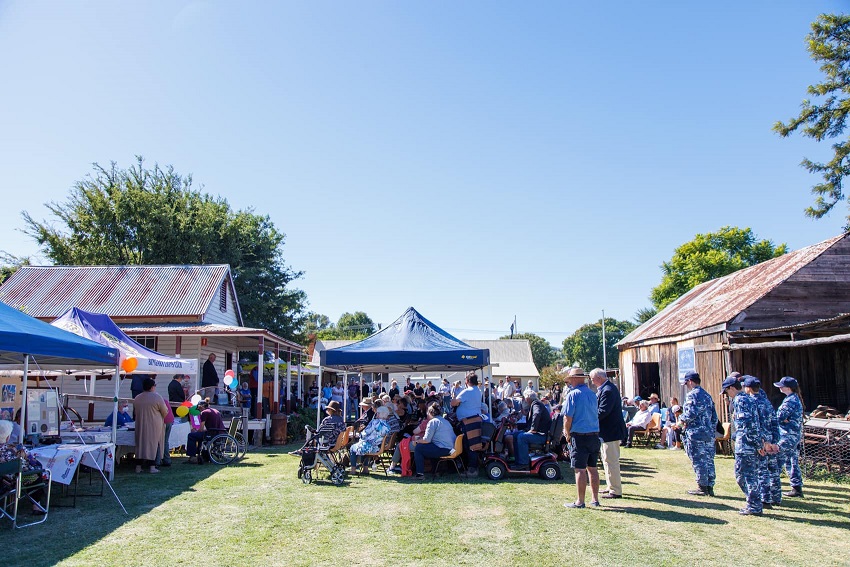
Bingara Historical Society Grand Opening War Museum 22nd April 2023
Bingara Historical Society and Museum.
Military Records








 © Commonwealth of Australia (National Archives of Australia)
© Commonwealth of Australia (National Archives of Australia)
Under Construction: 18/11/2006-28/02/2022.






























































